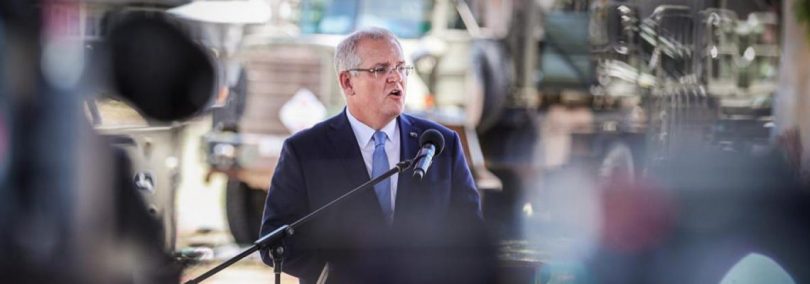Last week marked the commencement of the Australian Infrastructure Financing Facility for the Pacific (AIFFP), a combination of $1.5 billion in loans and $500 million in grants from Australia to fund infrastructure investments in the Pacific.
In this regard, the extent to which the AIFFP can recognise that neither infrastructure nor financial mechanisms are gender neutral will be central to its success. In the context of the high levels of gender inequality in the Pacific, as well as the debt burden already sustained across the region, analysis of debt sustainability as well as the merits of proposed infrastructure projects must take a gendered lens.
When a country takes on debt, it must make decisions about how to finance loan repayments. And when a country takes on more debt than it can handle, more often than not it is women bear the brunt of the consequences. Around the world, in times of economic contractionsome governments have attempted to reduce deficits through austerity budgets, where they have cut public spending and fully or partially privatised areas such as health, education, and social protection. Women are more likely to be employed in these sectors, and so not only lose their jobs but also take on more unpaid care, and bear the costs for services which are fully or partially privatised.
The UN’s Human Rights Council has recently adopted new guiding principles on the human rights impacts of economic policy. These guidelines include requirements for countries taking on sovereign debt, as well as their creditors, to conduct a human rights assessment of any economic reforms that are associated with debt servicing or debt relief to ensure they will not impact on the enjoyment of human rights, including for women. As a current sitting member of the Human Rights Council, Australia can be at the forefront of this normative shift in economic policy making, by considering countries’ ability to realisehuman rights within the economic assessments that are made around loan eligibility.
Of course, the AIFFP is responding to a real need for infrastructure investment in the Pacific, but it will be critical that it meets this need in a way that contributes to development and gender equality outcomes. This isn’t guaranteed, and funding a conference centre in a capital city is very different from connecting electricity to a remote village.
The World Bank estimates fewer than 60% of the population in most Pacific countries are covered by electricity services, and coverage varies wildly between rural and urban populations (as much as 100% coverage in urban areas to just 11.5% in rural Vanuatu). Fewer than 10% of people in Papua New Guinea have household pumped water, and quality is highly variable.
The potential for infrastructure which meets women’s needs to improve their health and free up time for other activities – including economic activities, rest and leisure – has the joint benefits of delivering women’s basic human rights, increasing gender equality and enabling women to benefit from economic growth. Because the workload associated with managing the infrastructure gap falls disproportionately to women, improving access to clean water, cooking fuels and electricity is a pre-requisite for opening up economic pathways to women’s empowerment.
Additionally, this kind of infrastructure can benefit women’s health and wellbeing. Data collected by using the Individual Deprivation Measure in Fiji found that 91% of women reported exposure to fumes from cooking and heating compared to 65% of men, and women went on to experience more severe smoke-related health problems at twice the rate of men. Infrastructure which is accessible for people with disabilities can enable more women with disabilities to participate in education or economic activities, and decrease the workload of women who are carers for people with disabilities.
Investing in the right kinds of infrastructure is an important component of a holistic approach to gender equality. The good news is that Australia’s development program already contains strong gender equality commitments and targets, and it is well placed to become a global leader on infrastructure for gender equality. Gender equality is a core priority of the Australian aid program and DFAT’s existing infrastructure strategy identifies that ‘gender issues need to be taken into account throughout all stages of infrastructure development’. The existing performance target on gender – that at least 80% of investments, regardless of their objectives, should effectively address gender issues in their implementation – is ambitious and situates us well in comparison to other institutions currently funding infrastructure in the Pacific region, such as the Asian Development Bank and World Bank.
The only thing missing for Australia to be a global leader in infrastructure that works for gender equality, backed by human rights compliant financing, is the political will to make it happen. For that, we need smart and savvy leadership which recognises that the AIFFP’s contribution to Australia’s interests will be inextricably connected to the outcomes it can deliver for the people of the Pacific. From this point on, the opportunity is ours to squander.
Read IWDA’s Policy Brief Making Infrastructure Work for Women



Leave a Comment